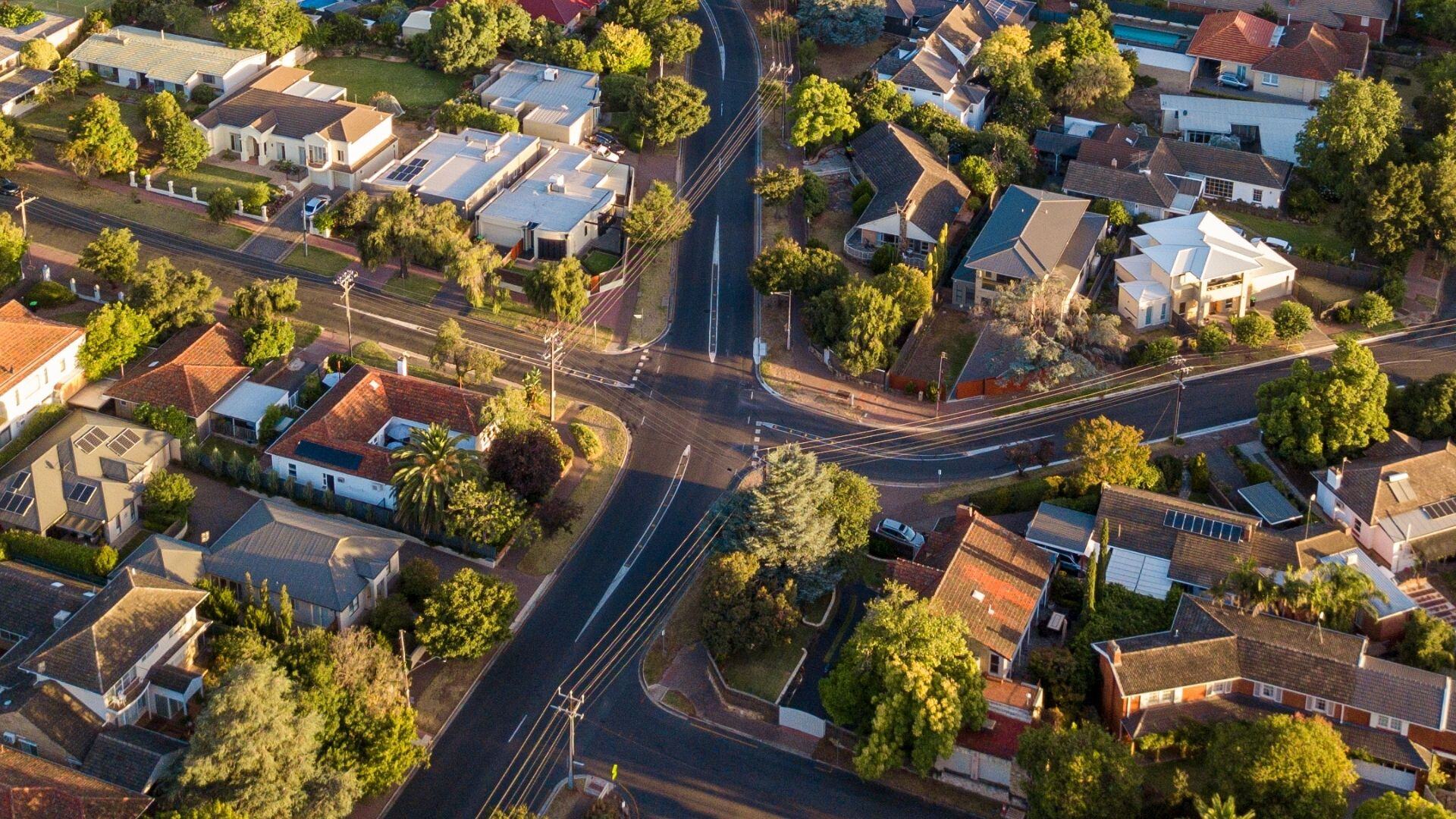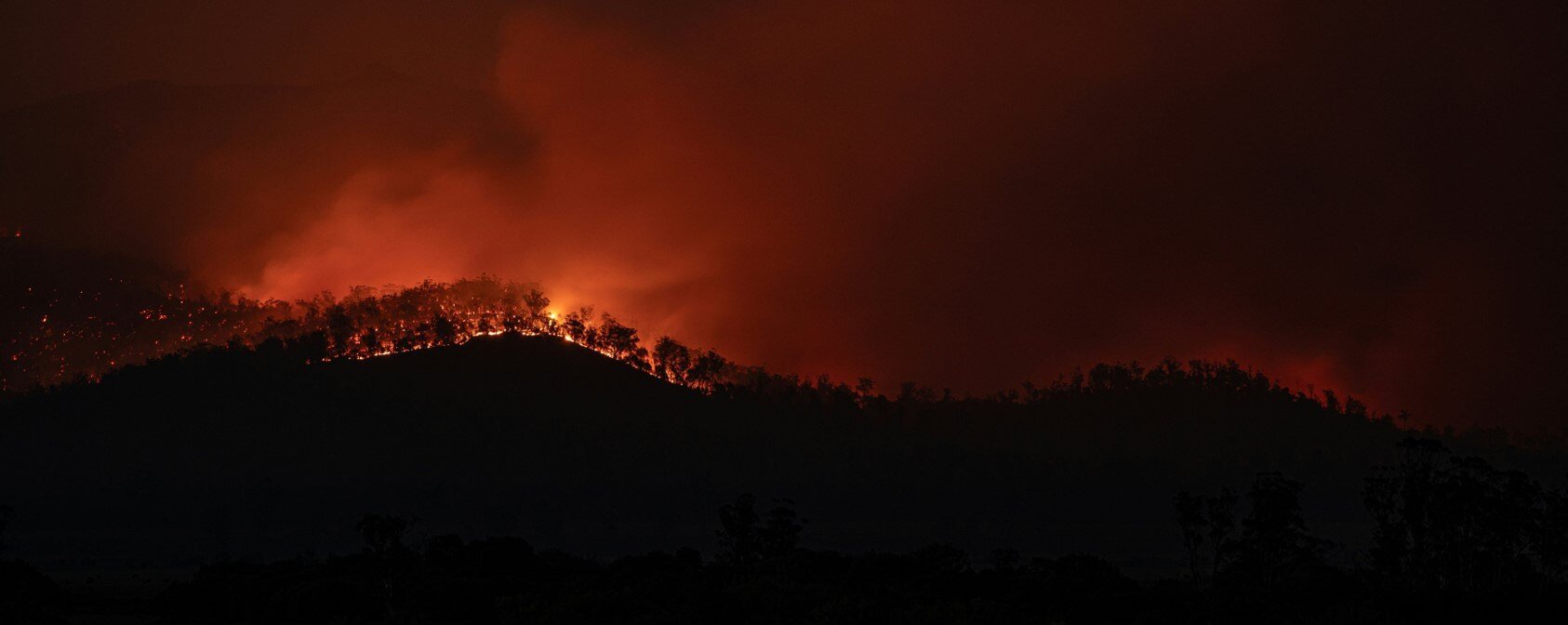BLOG
Population growth and decline (by LGA) in 2024
Population growth and decline (by LGA) in 2024
Census expert Glenn Capuano unpacks the latest population growth and decline trends by Local Government Area (LGA) in Australia, based on newly released ABS data for the 2023–24 financial year.
As of June 30, 2024, Australia's population reached 27.2 million—an annual increase of over 540,000 people, with net overseas migration accounting for a staggering 80% of that growth. While this marks the second-largest population increase ever recorded in absolute terms (following 2023's record), early signs point to a potential slowdown in growth. This is the third annual update since the 2021 Census, offering valuable insight ahead of the next national count in 2026.
You can now find updated population (ERP) data in our community profile and economic profile for your area.
The latest population growth data are out for the 2023-24 year. Each year around late March the ABS releases this with a reference period of the end of financial year, June 30th of the previous year. This is our third yearly update since the 2021 Census – with a reminder that it all gets revised again based on the results of the 2026 Census.
The latest population data shows that Australia's population stood at 27,194,369 at June 30th, 2024, a growth of 541,592 people in a year, driven by high overseas migration and low emigration (net overseas migration making up 80% of total growth). This was the second-largest annual growth (but not fastest in percentage terms) ever recorded in Australia, after 2023's record. Indications are that in the latter part of the financial year (and the one quarter we have nationally since then) growth has slowed down, but migration remains high in historic terms, and that's where most of our population growth comes from. Our population forecasters are assuming net overseas migration remains higher than official government forecasts into 2026/27.
The return to the cities continues
The main focus of this release is the regional variation. This shows that growth in our capital cities is higher than in regional areas, with the combined 8 capital cities of Australia adding 427,000 people compared to regional Australia's 113,000. This means 79% of all population growth is in Australia's Greater Capital City Areas. It continues a trend since COVID of a return to the cities, reversing the exodus of 2020-22.
At a capital city level in 2023-24, Greater Perth was the fastest growing, adding 72,700 people, or 3.15%, while Greater Melbourne added the most people, just over 142,000 for the financial year, and the second fastest growth at 2.74% just ahead of Brisbane's 2.69%. Hobart had by far the slowest growth adding less than 1,000 people.
| Capital city | ERP at 30 June 2024 | 2023-24 (no.) | 2023-24 (%) |
| Sydney | 5,557,233 | 107,538 | 1.97% |
| Melbourne | 5,350,705 | 142,637 | 2.74% |
| Brisbane | 2,780,063 | 72,930 | 2.69% |
| Adelaide | 1,469,163 | 22,125 | 1.53% |
| Perth | 2,384,371 | 72,742 | 3.15% |
| Hobart | 254,930 | 946 | 0.37% |
| Darwin | 152,489 | 1,367 | 0.90% |
| Canberra | 473,855 | 7,496 | 1.61% |
| Total capital cities | 18,422,809 | 427,781 | 2.38% |
Source: Australian Bureau of Statistics, Regional population 2023-24 financial year
Sydney vs Melbourne
Sydney remains larger than Melbourne on the widely used metric of the Greater Capital City Statistical Areas – these are stable wide boundaries around the cities, and in Sydney's case includes the Central Coast.
Melbourne is larger on another measure, the "Significant Urban Area", with a population of 5,245,182; about 100,000 more than Sydney's 5,143,256. On this measure, which is not as widely used as the "Greater Capital City", Sydney excludes the Central Coast and both cities exclude some outlying semi-rural areas making Melbourne larger when measuring contiguous urban area. We can say that Melbourne and Sydney on any measure are now very similar in size, and approximately twice as large as the next largest city in Australia.
Population growth across LGAs
Much of our work at .id is dealing with Local Government Areas. Below is a map of population growth across LGAs in Australia. How has your LGA changed over the last year?
New ERP data is now available on .id's community profile | profile.id and economic profile | economy.id sites for Local Government and related areas.
The fastest growing areas in Australia reflect the high growth of our capital cities, particularly the fringes of our cities. Victoria has 3 of the top 10, with WA having 6 and one in NSW. All of these bar Gingin and Dandaragan are in capitals, and Gingin is only just beyond the outskirts of Perth. Both these two also have high population growth from a low base (meaning percentage growth is high). Number 1 is Melton, on Melbourne's western outskirts, while Number 2 is the City of Melbourne itself, which was the fastest growing in the previous year, dropping only one spot, with an influx of migrants and students back to the city after COVID caused significant migration out.
Top 10 fastest growing LGAs* (2023-24)
| LGA | 2024 Population | Numerical and % growth 2023-24 | |
| Melton Vic | 219,697 | 13,676 | 6.64% |
| Melbourne Vic | 189,381 | 11.596 | 6.52% |
| Serpentine-Jarrahdale WA | 38,631 | 1,877 | 5.11% |
| Mitchell Vic | 56,384 | 2,672 | 4.97% |
| Perth WA | 34,624 | 1,627 | 4.93% |
| Kwinana WA | 54,672 | 2,533 | 4.86% |
| Camden NSW | 141,133 | 6,370 | 4.73% |
| Gingin WA | 6,348 | 278 | 4.58% |
| Dandaragan WA | 3,921 | 169 | 4.50% |
| Swan WA | 179,207 | 7,510 | 4.37% |
Source: Australian Bureau of Statistics, Regional population 2023-24 financial year.
The largest growth list (in terms of numbers, rather than percentage growth) tends to include very large population LGAs, which are high but not extremely high in percentage growth as they are coming off a large population base. These are always more likely to be in Queensland, including the mega-LGAs of Brisbane and the Gold Coast.
Top 10 largest growth LGAs* (2023-24)
| LGA | 2024 population | Numerical and % growth 2023-24 | |
| Brisbane Qld | 1,355,640 | 32,159 | 2.43% |
| Gold Coast Qld | 681,389 | 15,281 | 2.29% |
| Logan Qld | 392,339 | 14,615 | 3.87% |
| Melton Vic | 219,697 | 13,676 | 6.64% |
| Casey Vic | 405,415 | 13,355 | 3.41% |
| Wyndham Vic | 337,009 | 12,948 | 4.00% |
| Blacktown NSW | 438,843 | 12,768 | 3.00% |
| Moreton Bay Qld | 522,494 | 12,431 | 2.44% |
| Melbourne Vic | 189,381 | 11,596 | 6.52% |
| Sunshine Coast Qld | 375,328 | 9,392 | 2.57% |
Source: Australian Bureau of Statistics, Regional population 2023-24 financial year.
On the other side of the coin, some LGAs are falling in population. These ones had the biggest numerical declines, which are overall rather small, with 261 people being the biggest fall. The list includes a mix of cities in Tasmania that are experiencing population returning to the mainland, and rural areas in western and northern Victoria that have experienced long-term population decline. A notable inclusion is Lismore in NSW, which has been affected heavily by flooding in recent years.
Top 10 biggest declining LGAs* (2023-24)
| LGA | 2024 Population | Numerical change 2023-24 | |
| Buloke Vic | 5,956 | -83 | -1.37% |
| Hindmarsh Vic | 5,464 | -95 | -1.71% |
| Corangamite Vic | 15,846 | -101 | -0.63% |
| Swan Hill Vic | 21,094 | -116 | -0.55% |
| Lismore NSW | 43,783 | -118 | -0.27% |
| Glenorchy Tas | 50,743 | -125 | -0.25% |
| Hobart Tas | 55,977 | -130 | -0.23% |
| Campaspe Vic | 38,153 | -143 | -0.37% |
| Mount Isa Qld | 18,788 | -155 | -0.82% |
| Launceston Tas | 71,616 | -261 | -0.36% |
Source: Australian Bureau of Statistics, Regional population 2023-24 financial year.
For all the tables above, where an LGA has their own community profile through .id, we have linked it there, so you can see the local population data via our public profiles. If your LGA is not hyperlinked, contact us about getting a local community profile!
Population growth by state / territory
New South Wales
New South Wales has one area in the national top 10 by percentage growth: Camden, on the outer-south-west of Sydney. The top numerical growth in NSW is dominated by Western Sydney, which contains the top 5: Blacktown, The Hills, Liverpool, Camden and Cumberland, followed by Sydney City itself. Sydney can only really grow west due to geographic constraints, and these areas represent the new urban fringe with the last relatively affordable housing, mostly around 50km from Sydney City itself. New transport connections such as the Sydney Metro and trains to Leppington are driving this as well.
Outside Sydney, the fastest growth in regional NSW is in Cessnock (2.6%), on the outskirts of the Newcastle/Hunter Valley urban area, while flood-affected Lismore had the largest decline.
Victoria
Victoria has three of the top 10 fastest growing LGAs in the nation, including the top two, but also a lot of declining LGAs in the western and northern rural areas of the state. In 2023, the City of Melbourne was the fastest growing LGA in the country, as students returned to the city after COVID. In 2024 it's second, with a growth rate of 6.5% – pipped for number 1 by Melton, on Melbourne's western fringe. New suburbs are springing up between the satellite city of Melton (soon to be not a satellite any more, but contiguously urban with Melbourne) and the established suburbs. This includes places such as Fraser Rise, Strathtulloh and Weir Views – new suburbs many Melburnians have been unaware of unless they live in these areas. Wyndham, to the south of Melton has also featured strongly in the growth tables recently, and is still one of the largest growth totals. It missed out on the top 10 for percentage growth mainly due to the fact that it's now so large in population. Casey, in the south-east, is similar, and now exceeds 400,000 people, the most populous LGA in Victoria.
The drivers here are similar to those in Sydney – areas on the urban fringe are the last bastions of relative affordability for new family homes – but it differs from Sydney in that Melbourne is less geographically constrained and can grow the the west, north and south-east.
Outside Melbourne, Greater Geelong had the largest growth, adding over 6,700 people, but in percentage terms the City of Ballarat, with 2.5% growth, was the fastest in Regional Vic. Sea/ tree-change areas such as Baw Baw, Bass Coast and Surf Coast – among the fastest growing areas nationally during COVID – are still growing, but have fallen back to more modest growth rates in the 1-2% range. The biggest decline (only -143 people) was recorded in Campaspe Shire, on the NSW/Vic border near Echuca. This is another area which was affected by flooding in recent years (Rochester).
Queensland
Queensland has some of the largest LGAs in the country by population, so it's hard to do a percentage comparison, but generally South-East Queensland continues to grow very strongly. The top areas of growth includes Brisbane, Gold Coast, Logan City, Sunshine Coast, Ipswich, Redland and Moreton Bay Councils – all with growth rates greater than 2% – and Ipswich and Logan, both over 3%. Brisbane remains the most populous LGA in the nation, with 1.35 million people.
These statistics do throw up some oddities, though. The fastest growing LGA in Queensland, with a growth rate of 4.3%, is the tiny Aboriginal community of Mapoon, on the beautiful Cape York peninsula. Yes, this little place added 20 people, mainly through a high birth rate, bringing its population to 485. This shows how percentage growth statistics can be misleading without the proper context.
Only three LGAs recorded population declines in Queensland in 2024; the most significant was the mining town of Mount Isa, which lost 155 people.
South Australia
South Australia continues to have slow population growth after an influx during COVID. The whole state grew by 1.4%, or just more than 25,000 people, in 2023-24. The fastest growth was 4.1% in the City of Adelaide (continuing to be driven by overseas students), while the largest and second-fastest growth in percentage terms was Playford, containing significant affordable housing areas on Adelaide's northern fringe. Mount Barker, in the Adelaide Hills, grew by 3.1%.
The largest decline was in the steel town of Whyalla, losing 40 people, but there were no large declines anywhere, with many areas having stable populations.
Western Australia
Western Australia remains the fastest growing state, adding 2.8% or 81,000 people for the year, and having 6 areas in the top 10 for percentage growth nationally. Two of these – Gingin and Dandaragan – are percentage growth from a low population base. (Not as low a starting point as Mapoon, Qld though). The fastest growth (5.1%) was in Serpentine-Jarrahdale, on Perth's outer south-eastern fringe. Like other capital cities, the fringe areas vie with the inner city for the fastest growth. The City of Perth itself was next highest at 4.9% growth, followed by range of areas in outer Perth, such as Wanneroo and Swan on the northern/eastern fringe, Kwinana and Cockburn in the south-west, and Serpentine-Jarrahdale and neighbouring Armadale in the south-east.
Outside of Perth, as discussed above, Gingin and Dandaragan had the fastest growth, with the more major regional centres such as Kalgoorlie, Geraldton and Albany having relatively small population growth. Mining areas, such as Karratha and East Pilbara, were a mixed bag with some moderate growth and some small declines. This is often to do with where mining and construction activity is happening, and can fluctuate a lot year on year. There is also very strong population growth in the south-west, with Augusta-Margaret River having a 4.2% growth rate, just outside the top 10 nationally.
Tasmania
Tasmania had the slowest growth in the nation, adding just 1,758 people for the year, a growth rate of 0.3%. It had a large share of the declining areas as well. The City of Launceston recorded the largest population decline nationally (albeit only 261 people), but metropolitan areas in Hobart, such as the Cities of Hobart and Glenorchy also declined slightly.
Sorell, to the east of Hobart, had 1.5% growth, topping the list in Tasmania. There was also significant growth in Huon Valley (1.4%) and Brighton (1.4%).
The territories
The Australian Capital Territory added 1.6% to its population, while the Northern Territory added 1.6%. The small area of the Darwin Waterfront Precinct is now identified in the ABS' LGA list, though it isn't an LGA in the traditional sense (it's a statutory authority established by the NT government). Similar to other areas with high population growth from a small base, it had a percentage growth of 8.4% by adding just 24 people, for a population of 309. Litchfield, on Darwin's outskirts, had the highest population growth otherwise, adding 509 people.
More to come
We have now added the new population numbers to all our community profile | profile.id. and economic profile economy.id sites for Local Government around Australia. These are also due to be revised again once we get the new Census data for 2026 (likely in mid-2027), so all these current numbers are just preliminary. Watch this space!
Learn more
Learn more about community profile | profile.id
Explore the data - dive into demographic insights and explore your area's population story.
Learn more about economic profile | economy.id
See the data in action — uncover economic trends and industry data for your local area.
Have questions or need support?
Get in touch with our team — we're here to help.
*Note that the administrative area of "Darwin Waterfront Precinct" – which technically had a higher percentage growth than any LGA – is excluded from the list as it's not an LGA with a council in the traditional sense, but a statutory authority established by the NT government. The ABS reports on this area as an LGA.
Glenn Capuano - Census Expert
Glenn is our resident Census expert. After ten years working at the ABS, Glenn's deep knowledge of the Census has been a crucial input in the development of our community profiles. These tools help everyday people uncover the rich and important stories about our communities that are often hidden deep in the Census data. Glenn is also our most prolific blogger - if you're reading this, you've just finished reading one of his blogs. Take a quick look at the front page of our blog and you'll no doubt find more of Glenn's latest work. As a client manager, Glenn travels the country giving sought-after briefings to councils and communities (these are also great opportunities for Glenn to tend to his rankings in Geolocation games such as Munzee and Geocaching).









